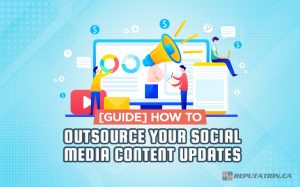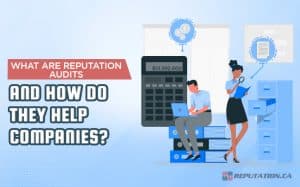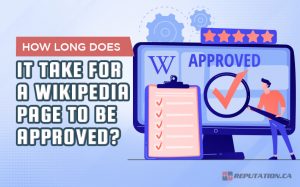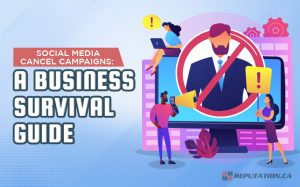Once upon a time, all a company or professional needed to succeed was a quality product and effective advertisement. Nowadays, consumers are more discerning and less likely to purchase a product or service from a company that does not align with their morality. As a result, people are more vigilant about looking into a company’s background and that of the corporate leadership. This allows customers to remain confident that the companies they are using will not conflict with their core values and beliefs.
This has become an almost essential practice for the newest generation of consumers, with many adopting the habit due to their upbringing and desire to improve society. Unfortunately, this has also exposed several executives to the spotlight against their will, bringing their qualifications (or lack thereof) to the forefront. As a result, many executives have begun enhancing their status in the professional world.
Most executives have begun making “executive profiles” to help them stay ahead in a highly competitive atmosphere. The process has been around for a long time, but some are inexperienced with the concept. Furthermore, the requirements for an ideal executive profile have evolved rapidly due to changing economic, professional, and socio-political conditions.
This has kept modern executives on their toes to try and keep up with the times and update their profiles accordingly. Now, it is 2023, and the criteria for an executive profile have changed once again. The question is: how do you build a powerful profile in today’s society?
What is an Executive Profile?
If you are new to your industry and just starting as an executive employee, you might not be familiar with the concept of an executive profile. While this is not unexpected, it is imperative to understand what the profile is and how it impacts your professional prospects moving forward.
Your professional history is akin to a story, with different challenges and adventures arising as you progress. You must cultivate certain skills and knowledge from the beginning to start your professional journey. These qualifications help you get your foot in the door for your first job, which might be an entry-level position within your current employer’s structure. As you progress through your entry-level position, you cultivate new skills and knowledge (some of which are specific to your current employer) that improve your professional value. Once you become an executive, you become responsible for the skills and performance of your subordinates.

An executive profile summarizes your skills and qualifications that illustrate what you bring to the table as a leader. While it is all well and good to dream of advancing within your career, it will never happen unless you prove you have what it takes to take charge. The profile will allow you to create a one-stop shop for employers and recruiters to assess when considering you for an executive position. By now, this is probably starting to sound like another version of your résumé; an executive profile is less succinct.
With a résumé, you condense your skills and history down to an easy-to-read bulleted list. An executive profile is closer to an in-depth essay about your skills, professional history, educational history, and other details that might increase your value to an employer. These profiles are usually reserved for employers who want as much detail about you as humanly possible, and it doubles as a way of measuring your ability to report information without extraneous detail.
Creating an executive profile is time-consuming and is not the sort of thing you can finish in a single evening. Aside from the length and level of detail, a lot of information must be included if it is going to pass your prospective employer’s muster. Fortunately, you can use a few techniques to enhance your profile’s quality and ensure it is as powerful as it can be in today’s socio-political climate.
#1: Focus On the Essentials
While an executive profile is supposed to be detailed and structured like an essay you might have written in college, that does not mean everything about you is important to the profile. Depending on how long it took you to become qualified as an executive, you likely have a decade or two of education and professional experience behind you. While your history is important, not everything will matter to a prospective employer.
For example, dedicating a paragraph to your time on your college football team is unlikely to resonate with the recruiters of a technology conglomerate. You need to focus on the details of your past that are relevant to the industry you are trying to work in. Dedicate a paragraph to your current position and write an engaging description of your current responsibilities.

You can also add information about any additional involvement you might have within the industry (i.e., writing a new line of code that might impress a software developer). List any acknowledgments or awards you have earned due to your professional knowledge or history, and add examples of your knowledge that prove you know what you are talking about. Adding educational history is also important to illustrate what kind of knowledge you have and the level of education you received.
#2: Create a Legible Order
Knowing what information to put in your profile is only half the battle since you must logically structure the profile. Transitioning from your past professional experience into your educational history does not always make sense and might disrupt the profile’s flow. Like any other essay or document, it must be easy for the reader to follow if you want to avoid losing their interest. While the profile does not necessarily have to list information chronologically, it must flow and make sense to the reader.

The best way to do this is to tailor your profile to your audience so you can format it according to the information they will prioritize. Starting with basic information about yourself is the general rule, but then you can lead into whatever information you feel will be most important. If you elect to start with professional history, phrase it in a way that will naturally progress to the next section.
For example, listing your responsibilities in your current position can be an excellent segue into the skills you cultivated that make you so effective. Say you currently work at a software company as a coder; you could go from your current responsibilities and explain how your expertise and experience with a specific programming language benefits your work. Meanwhile, interjecting your basic history after discussing your qualifications disrupts the natural flow and is viewed as an obstacle to the main point of the profile.
#3: Research Yourself
As strange as this step might sound, it has become an extremely important aspect of maximizing your chances of being hired. It is standard practice for most major companies to do background research on potential hires, though this usually occurs after they advance in the recruitment process. Background checks and online research identify problematic individuals before they can be hired. This helps companies avoid recruiting convicted felons or individuals with unforgivable social views (e.g., racism or sexism).
This protects companies from potential scandals or drama that might impact their relationship with their consumers. Typically, this information was limited to the background check to search for arrest records or formal complaints. Unfortunately, the advent of modern social technology has widened the search parameters and made uncomfortable information about you more likely to surface. Social media is the most common resource for these issues, which has become a huge phenomenon in recent years.

Originally, the most advanced social media platform was the AOL chatrooms in the days of dial-up internet. Once MySpace was created, new platforms like Facebook, Twitter, and Instagram rose and redefined social media. Disregarding the current chaos surrounding Twitter, it remains a widely used platform with a massive user base. Thanks to the anonymity of online posting and the ease of using such websites, we are emboldened to post inflammatory comments.
While many of our posts could be chalked up to youthful ignorance or stupidity, not everyone will let past infractions go unpunished. A bad joke from your teenage years or an ill-advised comment supporting an unpopular political candidate can resurface. Even comedic videos you created or supported that have since become “problematic” can cause friction between you and a potential employer.
Therefore, looking yourself up online is in your best interest to see what results turn up. This way, information that might be worth purging can be removed before you submit the profile for official review. Furthermore, an online search for yourself could reveal information you meant to cover but forgot. For example, perhaps you won an award for something in your field that is worth mentioning, but it slipped your mind as you drafted the profile. It can also help you get ahead of certain information that cannot be removed but must be acknowledged.
#4: Read What You Wrote
One of the biggest mistakes people make when drafting professional documents like résumés and executive profiles is trying to get it over with. Many write what they think is necessary and submit it with only a cursory re-read to ensure everything is there. Unfortunately, this can lead to several errors in the final product or unnecessary information being included. Therefore, you should set time aside to read through the document as though you were the prospective employer.
This will give you insight into what information is important and what can be culled depending on what is most relevant. During the initial stages of the draft, everything seems important, but reading what you write from your audience’s perspective can let you know what information might cause the profile to drag on. This allows you to edit the profile and remove anything you feel might be convoluting your profile or causing it to drag on.

Furthermore, re-reading what you have written will expose any grammatical errors you might have missed while writing and submitting an executive profile rife with spelling errors and poor grammar. Aside from making the profile more difficult to read, submitting a document with glaring errors is considered unprofessional. Sometimes, minor errors like a missing comma or a word with a letter out of place can slip through the cracks.
If you have concerns about the grammar or punctuation after going through the profile directly, you could run it through a grammar-checker like Grammarly. However, you must read through it yourself to ensure the profile is as detailed as possible without too much extraneous information holding it back.
Nothing should stop you from submitting it once you have read over your profile and it passes your final checks. While standards have evolved, executive profiles are relatively simple and can still be drafted without much trouble. The biggest challenge is seeing what information about you crops up online, but the process is simple otherwise.
Take Your Reputation Back!
An executive profile is one of the most intense professional documents you will ever draft, but it can remarkably affect your career. The trick is ensuring the document hits all the right notes and any potential controversies are eliminated or addressed. Some aspects of creating an executive profile are simple and best left to the person writing the document. Unfortunately, scouring the internet for information about strategy #3 can be overwhelming for a single individual.

We at Reputation know that ill-advised internet activity can devastate your professional and personal life. That is why we have dedicated ourselves to offering reputation management services designed to help you protect your image. Among our services are social media management and the ability to request information takedowns on your behalf. This allows you to focus on the parts of your personal and professional history that cannot or should not be kept private. There are no shortcuts concerning your public image, so visit our website today and take your reputation back!
Do you have any questions about executive profiles, how to build one, or anything else we mentioned in this article? If so, please feel free to reach out and contact us at any time! We’d be more than happy to answer any of your potential questions.











